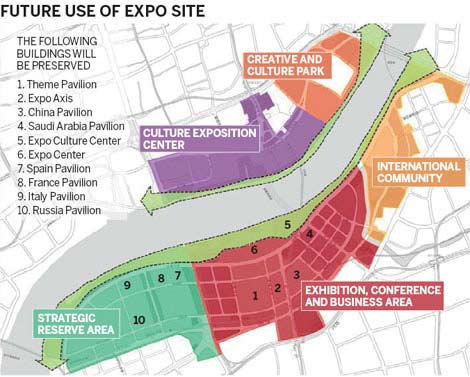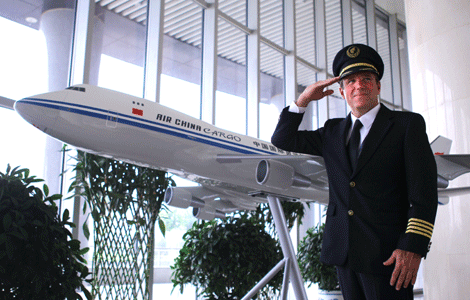Shanghai aims to create slice of Europe at Expo site
Updated: 2011-04-01 10:41
By Yu Ran (China Daily European Weekly)
 |
Most of the major exhibits and the interior decoration in the Spanish and Russian pavilions were gifted to China after the Expo. These included the popular 'Miguelin', the giant baby in the Spanish pavilion. The exterior displays of the French and Italian pavilions have been retained, but most of the exhibits have been sent back to the sponsors.
"I presume that the themes of the four European pavilions will be changed. But it will depend on what we're going to present and will mainly relate to art and cultural items supplied by companies or galleries," says Zhu Hang, associate director of the research center under the Bureau of Shanghai World Expo Coordination.
He says that his team will try to design and plan new themes around the exhibits to offer interesting experiences to tourists and visitors.
The Shanghai Municipal Bureau of Planning and Land Resources unveiled a draft structural plan for redeveloping the 6.68-square-kilometer site on March 15, more than four months after the Expo 2010 Shanghai ended.
Under the plan, the site in the heart of the city that spans the Huangpu River will be redeveloped as a center for international cultural exchanges, a tourist and exhibition destination and also as a hub for the global and regional headquarters of leading companies and organizations.
The Pudong side of the Expo site that houses major permanent landmarks like the China Pavilion and the Expo Culture Center, spread over 1.94 sq km, will be transformed into a major center for exhibitions, conferences and business. It will also be equipped with restaurants and hotels.
"The area of the Expo Garden where the China Pavilion and the Saudi Arabia Pavilion are located will be kept in their original style, while the area which houses the four European pavilions will be transformed into an art and cultural exhibition center," says Zhu.
The area adjacent to the main Expo site, or the 0.63-sq-km Expo Village, will be developed as an international residential area complete with residences, malls, schools and entertainment centers.
Houtan Wetland Park, the southernmost area in the Expor site spread over 1.4 sq km, will be reserved for the city's sustainable development in the future.
Meanwhile, the landmark China Pavilion at the Expo site will complete its six-month extended exhibition at the Expo Garden on May 31 and reopen for public viewing along with the other foreign pavilions.
"After the six-month extended exhibition of the China Pavilion, it will undergo maintenance but will not be closed to visitors for too long," says Qian Zhiguang, director of the China Pavilion Department of the Bureau of Shanghai World Expo Coordination.
Qian says that with only two months remaining, there has been a buzz of activity at the pavilion. The average daily number of visitors at the pavilion is around 40,000 on weekdays and nearly 50,000 during the weekends.
In the adjacent Puxi site, the 0.42-sq-km Urban Best Practice Area will be converted into a creative and cultural park to attract global creative studios and designers.
The 0.93-sq-km section that housed the corporate pavilions on the Puxi side will feature a number of industrial relics that were retained during the construction of the Expo site. It will be turned into a cultural exposition center that could potentially rival the Washington DC-based Smithsonian Institution and the Berlin-based Museuminsel.
The World Expo Museum will be enlarged and renamed as the Expo 2010 Museum.
"We have gathered thousands of exhibits from previous expos as well as from the Expo 2010," says Chen Xiejun, director of the World Expo Museum.
"We're keen to retain the innovative spirit of the 2010 Expo in the museum by keeping traces of all the related technology and cultural and lifestyle ideas as a memento for future generations," says Chen.
E-paper

Pearl paradise
Dreams of a 'crazy' man turned out to be a real pearler for city
Literary beacon
Venice of china
Up to the mark
Specials

Power of profit
Western companies can learn from management practices of firms in emerging economies

Foreign-friendly skies
About a year ago, 48-year-old Roy Weinberg gave up his job with US Airways, moved to Shanghai and became a captain for China's Spring Airlines.

Plows, tough guys and real men
在这个时代,怎样才"够男人"? On the character "Man"
